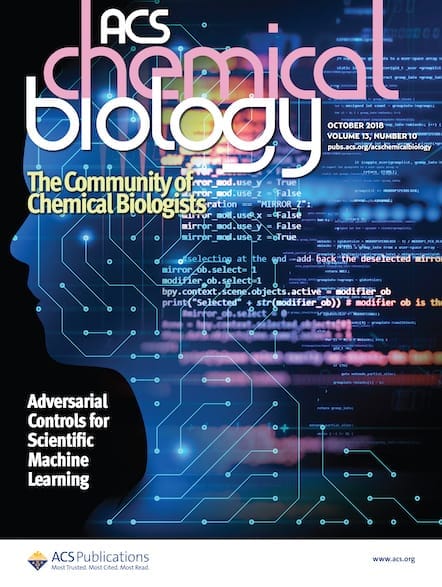Saxitoxin—a compound made by marine microbes that can contaminate shellfish—is a toxin so potent that minute quantities can prove deadly. Its mode of action means that less toxic versions have potential as nonaddictive painkillers, but the molecule’s complexity makes it tricky to modify with chemical reagents. Now, researchers have worked out how a suite of […]

Saxitoxin—a compound made by marine microbes that can contaminate shellfish—is a toxin so potent that minute quantities can prove deadly. Its mode of action means that less toxic versions have potential as nonaddictive painkillers, but the molecule’s complexity makes it tricky to modify with chemical reagents. Now, researchers have worked out how a suite of microbial enzymes can make the molecule less toxic, taking a first step toward biocatalytic development of new drugs based on saxitoxin and other shellfish toxins.
Saxitoxin is a large, clunky molecule with seven nitrogens. It acts by binding strongly to voltage-gated sodium channels that sit in cell membranes and initiate and transmit nerve signals. When saxitoxin binds to these channels, it over-excites cells and blocks nerve impulses. A less potent version that causes a milder effect could potentially tamp down pain sensations without hindering other nerve signals. But the compound’s therapeutic potential has been largely untapped because its complex chemical structure is difficult to tweak, says Alison Narayan of the University of Michigan, who led the new work.
But what’s difficult to do with laboratory reagents can often be easily accomplished by enzymes in nature. Previous studies have identified enzymes in marine microbes, scallops, and other shellfish that can add sulfur-containing groups to saxitoxin to make less toxic versions. To understand how the enzymes make these substitutions and what substrates they target, Narayan and her colleagues turned to three enzymes produced by different types of cyanobacteria, one of the organisms that can produce saxitoxins, and expressed the genes for these enzymes in Escherichia coli.
They purified the enzymes and studied how each one acted individually on a range of saxitoxin-related compounds. The reactions resulted in molecules that had sulfur groups in multiple locations.
They also performed a cascade, or one-pot, reaction in which all three enzymes were added to saxitoxin at the same time. “Typically, with chemical synthesis you form one bond, isolate the product, purify it and then set up the next reaction,” Narayan explains. “We were pleased to be able to do these types of cascades, which allow you to really quickly make modifications to a molecule like saxitoxin.”
The team then tested the potency of the sulfur-containing compounds on sodium channels within cell membranes derived from mouse brains and compared them with saxitoxin. The researchers first saturated all the channels with radioactively labeled saxitoxin and then treated them with the derivatives to see how much would be needed to compete with and remove the bound saxitoxin. They found that compounds with more sulfur groups were less potent—and thus less toxic—since more of these compounds were needed to remove bound saxitoxin. These lower potency compounds could be further developed as potential painkillers, because similar toxin-based compounds are already in clinical trials as alternatives to opioids for treating acute post-surgery pain.
“This study is the first to show the sequence of enzyme reactions and intermediates” needed to make these less toxic variants, says Bradley Moore of the University of California, San Diego, who studies marine microbial products but was not involved with this study.
“It’s always interesting to see how nature does the chemistry,” says Yi Tang of the University of California Los Angeles. Constructing these molecules starting with their basic building blocks isn’t practical because they are so complex, he adds. “Enzymatic reactions have fewer steps and are easier to scale up.”
